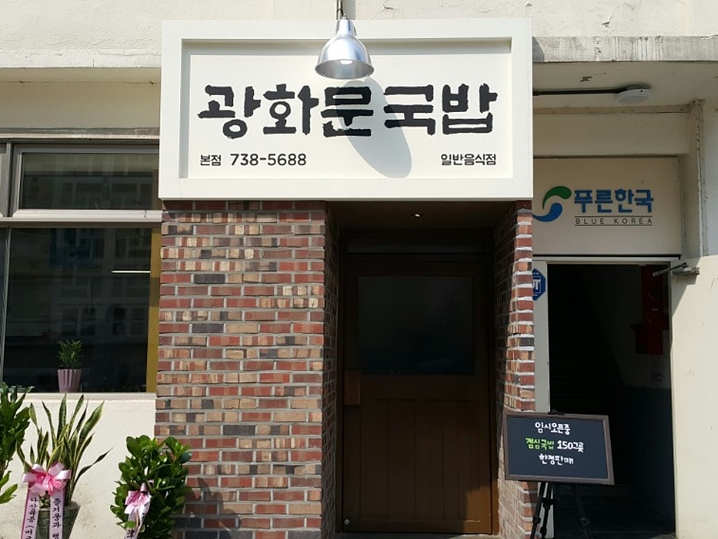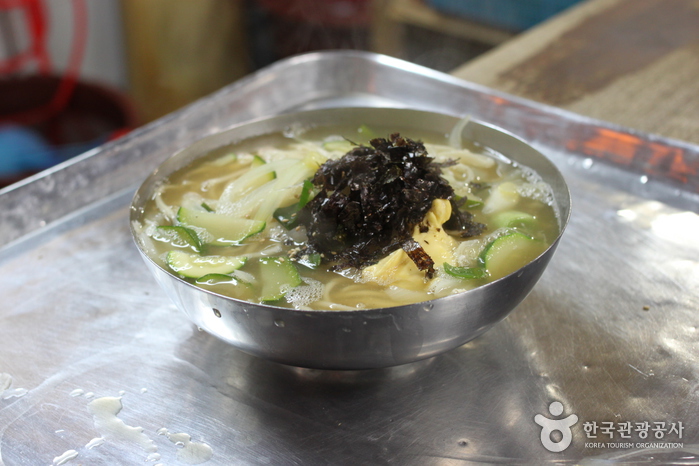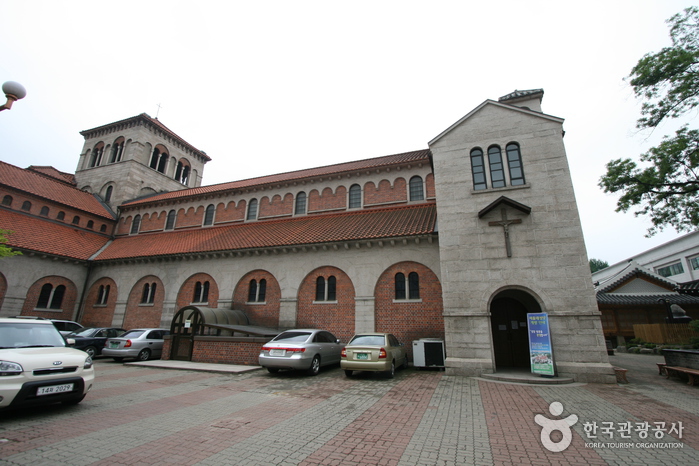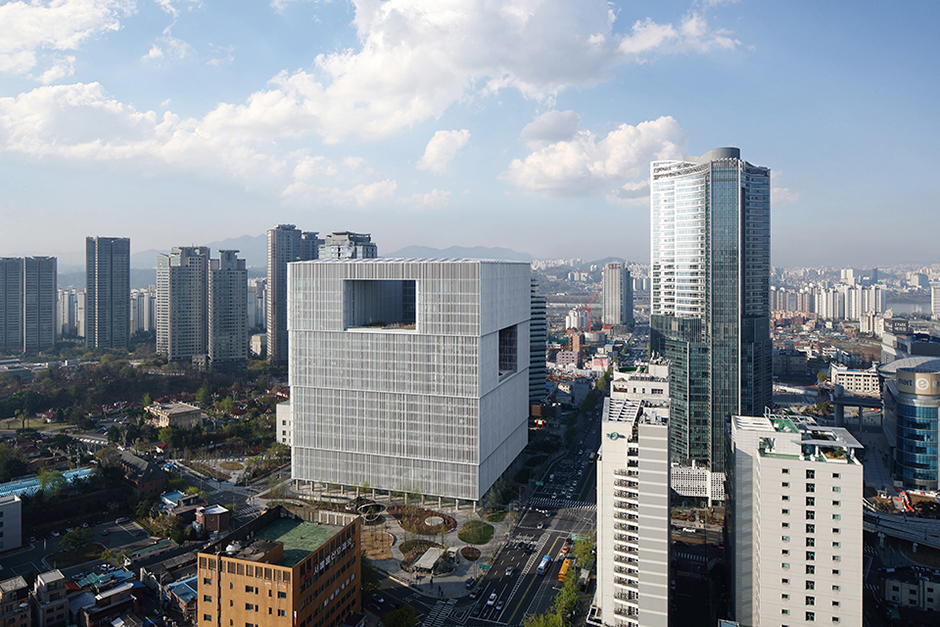Namdaemun Daeho Optic [Tax Refund Shop] (남대문대호안경)
6.4Km 2024-06-27
B1, #7, 32, Namdaemunsijang 4-gil, Jung-gu, Seoul
-
Hanaro Optics [Tax Refund Shop] (하나로안경원)
6.4Km 2024-04-19
48, Namdaemunsijang 4-gil, Jung-gu, Seoul
-
Choeun Optical - Hoehyeon Branch [Tax Refund Shop] (조은안경 회현)
6.4Km 2024-04-22
Joeun Eyewear, 42, Namdaemunsijang 4-gil, Jung-gu, Seoul
-
Choeun Optical [Tax Refund Shop] (조은안경)
6.4Km 2024-06-27
42, Namdaemunsijang 4-gil, Jung-gu, Seoul
-
Sangchonjae House (상촌재)
6.4Km 2024-10-21
12-11 , Jahamun-ro 17-gil, Jongno-gu, Seoul
Sangchonjae House, run by the Jongno Cultural Foundation, is a traditional hanok cultural space located in Sejong Village, Ogin-dong, Jongno-gu, and operates various cultural Korean programs such as exhibitions, educational experiences, and events to fully experience Korea's four seasons. The name Sangchonjae was conceived from the old name of Sejong Village, the western part of Gyeongbokgung Palace and the birthplace of King Sejong. The house reflects the lifestyle of an ordinary peasant during the Joseon dynasty. It consists of three buildings: the main building, the guesthouse known as sarangchae, and the annex. There is an experience center indoors offering tea ceremonies and traditional game experiences.
Gwanghwamun Gukbap (광화문국밥)
6.4Km 2024-06-19
53 Sejong-daero 21-gil, Jung-gu, Seoul
Gwanghwamun Gukbap is a dwaeji gukbap (pork and rice soup) restaurant operated by Chef Park Chanil. Its distinctive feature lies in using only black pork loin and shoulder to enhance the flavor. The signature dish is the dwaeji gukbap, which boasts a mild, clean, and deep flavor. In addition to that, they also offer dwaeji suyuk (boiled pork slices) and pisundae (sundae with pork blood). Known for its authentic taste of rice soup and rich broth, it's a popular destination for many.
Hyundai Kalguksu (현대칼국수)
6.4Km 2020-06-16
76, Sejong-daero, Jung-gu, Seoul
+82-2-752-9504
Hyundai Kalguksu is a kalguksu (handmade knife-cut noodles) restaurant that has been in the family for two generations (1982). The restaurant is extremely popular among people working at nearby businesses, thanks to the rich flavor of the broth. Anchovies, dried pollack heads, and kelp are simmered for many hours, and then, other ingredients are added: soft noodles and various vegetables including pumpkin, onion, and green onions. The restaurant is famous for the exquisite taste of its kalguksu, as well as for its large servings. Just one bowl is enough to satisfy a starving man, but if you are still hungry, don’t hesitate to ask for more rice or noodles for free. Another unforgettable specialty here is kimchi. You will also be able to enjoy geotjeori (freshly made kimchi) and kkakdugi (sliced white-radish kimchi), which is fermented for about three days.
Seoul Cathedral Anglican Church or Korea (대한성공회 서울주교좌성당)
6.4Km 2020-03-30
15, Sejong-daero 21-gil, Jung-gu, Seoul
+82-2-730-6611
Seoul Cathedral Anglican Church of Korea began
construction under Mark Trollope, the third bishop of the Anglican Church of Korea, in 1922. It was designed by a English architect Arthor Dixon. Dedication ceremony of the church was held On May 2, 1926 when the construction work hadn't been completed yet. At that time, the church building was a 3-storey building with
a 992 m² floor size. Later in 1993, the original blue print of the church was found at a library in England and the construction resumed
and would be completed in 1996.
The church building is a harmonious combination of Romanesque and traditional Korean style. The exterior of the church is shaped like a cross with various lines placed in harmony. Inside the cathedral, there are 12 stone columns symbolizing the 12 apostles, a
mosaic of Jesus on the front wall, and a brass plate in commemoration of Mark Trollope. Under the brass plate, the
remains of the bishop Mark Trollope are enshrined.
* Size: B1-3F
* Building site area: 519㎡ (157 pyeong), Ground area 909㎡ (275 pyeong)
Amorepacific Museum of Art (아모레퍼시픽미술관)
6.4Km 2024-12-31
100 Hangang-daero, Yongsan-gu, Seoul
Amorepacific Museum of Art, located in Yongsan-gu, Seoul, was originally a museum exhibiting artworks collected by the late Seo Seong-hwan, the founder of Amorepacific, but later changed its name to Amorepacific Museum of Art, or APMA, in 2009 and has since been operating as an art exhibition hall. The mission upon its foundation was seeking to be "a space where beauty in the midst of daily lives is discovered" and communicating with the public. In accordance with this objective, the museum collects, researches, and exhibits Korean ancient art and both Korean and international contemporary art while, also, aiding researchers, scholars, and young artists. The underground exhibition hall hosts diverse exhibits encompassing ancient art, contemporary art, and Korean art. The 1st floor of the "Atrium," an enormous space that continues from the 1st to 3rd floors, features the museum lobby, a museum shop, an exhibition space called "APMA Cabinet" and apLAP, which is a library of art exhibition brochures from around the world. The art museum is located on the 1st floor of the new Amorepacific headquarters building, a famous work of architectural beauty of Yongsan designed after white porcelain.

![Hanaro Optics [Tax Refund Shop] (하나로안경원)](http://tong.visitkorea.or.kr/cms/resource/80/2878580_image2_1.jpg)




 English
English
 한국어
한국어 日本語
日本語 中文(简体)
中文(简体) Deutsch
Deutsch Français
Français Español
Español Русский
Русский